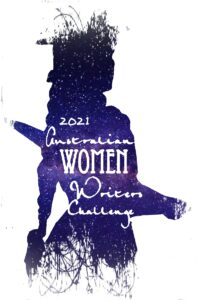Happy new year and welcome to my reading wrap-up for 2023. It was a tough year of reading; I had a lot going on in lots of other areas of my life and found it hard trying to squeeze reading in amongst everything. I’m also very, very, VERY behind in my reviews. Nevertheless, books were read, opinions were had, and somehow, despite this, I had the most visits to my blog (almost double last year’s) since I started it, so to everyone who has dropped by: welcome!
Best Reads of 2023

I read lots of different genres, but the vast majority was fantasy. Quite a few of these were for my fantasy book club, but I seemed to pick a lot of fantasy audiobooks and books from my to-read piles as well. Overall, my favourite books of the year fell into the following genres:
- fantasy
- historical fiction
- general fiction, and
- science fiction.
It’s a bit of a shorter list this year; there weren’t quite as many wow books this year unfortunately. Anyway, I’ll update with links to reviews as I catch up.
Fantasy
A big favourite of mine from this year was “The Lies of the Ajungo” by Moses Ose Utomi. It was a hard-hitting fantasy novella about corruption and control. I also really loved “The Book that Wouldn’t Burn” by Mark Lawrence. Lawrence has really hit his stride with this book and it was a perfect blend of speculative fiction, twists and libraries. Shelley Parker-Chan followed up the phenomenal “She Who Became the Sun” with the sequel: “He Who Drowned the World”. After a very strong setup in the first book, the second took a different direction with a huge amount of fascinating character development. Finally, after nine years since his last book, Patrick Rothfuss has released a novella set in his Kingkiller Chronicle universe called “The Narrow Road Between Desires”. The story follows a day in the life of Bast, a minor character in the series, and is really quite delightful.
Historical Fiction
The best historical fiction novel I read this year was “Horse” by Geraldine Brooks. This book had a lot of personal significance for me, but was also an extremely compelling story about slavery, horseracing and history in the USA.

Another good historical fiction novel I read was “The Fire and the Rose” by Robyn Cadwallader. Set in the 1200s, this richly written book revisits some familiar themes but tackles many new ones around state-sanctioned discrimination, single parenthood and facial difference.
General Fiction
I really enjoyed the review request “One-Match Fire” by Paul Lamb. An intergenerational novel about fatherhood and masculinity, it really left an impact on me. R. F. Kuang’s novel “Yellowface” was an engrossing satirical story about race, own voices and the publishing industry that I really enjoyed. Finally, Miles Franklin Literary Award-winner “Chai Time at the Cinnamon Gardens” by Shankari Chandran was a rich and heartrending novel about the Tamil diaspora, the Sri Lankan civil war, race discrimination and aged care in Australia.
Science Fiction
After hearing about this book for a while, the queer science-fiction novella “A Psalm for the Wild-Built” by Becky Chambers did not disappoint with its story about finding purpose, love and tea.
Most Popular Reviews of 2022
Some of your favourites are still up there in the top 10 most popular reviews, but some new reviews have made it to the list, especially Indonesian books, so selamat datang ke blogku kepada semua pembaca Indonesia! It’s been interesting to compare with 2021 and 2022 and to see how many reviews are staying so popular (I’ve marked the five reviews below which have consistently stayed on the list). If you’ve made your way to this blog because of these books, leave a comment, I’d love to know why!
- (Adults Only) The Veiled Woman by Anaïs Nin (2021, 2022)
- Cantik Itu Luka (Beauty is a Wound) by Eka Kurniawan
- (Adults Only) My Monster Boyfriend edited by C. Spike Trotman (2021, 2022)
- The Magic Pudding: The Adventures of Bunyip Bluegum by Norman Lindsay (2021, 2022)
- How the Marquis Got His Coat Back by Neil Gaiman (2021, 2022)
- Throat by Ellen van Neerven
- The Buru Quartet (Tetralogi Buru) by Pramoedya Ananta Toer
- Pemulwuy: The Rainbow Warrior by Eric Willmot (2021, 2022)
- The Reader (Der Vorleser) by Bernhard Schlink
- The Great Beanie Baby Bubble by Zac Bissonnette
2023 Reading Challenges
I only did two reading challenges this year:
- my StoryGraph 2023 Reading Goal, and
- my Short Stack Reading Challenge.
I tripped at the finish line for my 2023 Reading Goal of 80 books, falling just short at 78. It was an incredibly busy year with a lot of other things going on, but I am a bit disappointed I didn’t quite make it to 80.

However, I did actually manage to read a whopping 28 books during the month of December for my Short Stack Reading Challenge, which is far closer to my goal than the 50 books I otherwise read. I don’t think anyone else joined in with me this year but I was very slack about promoting it to be honest. I’ll try to be a bit more proactive with it in the lead up to next December.





























